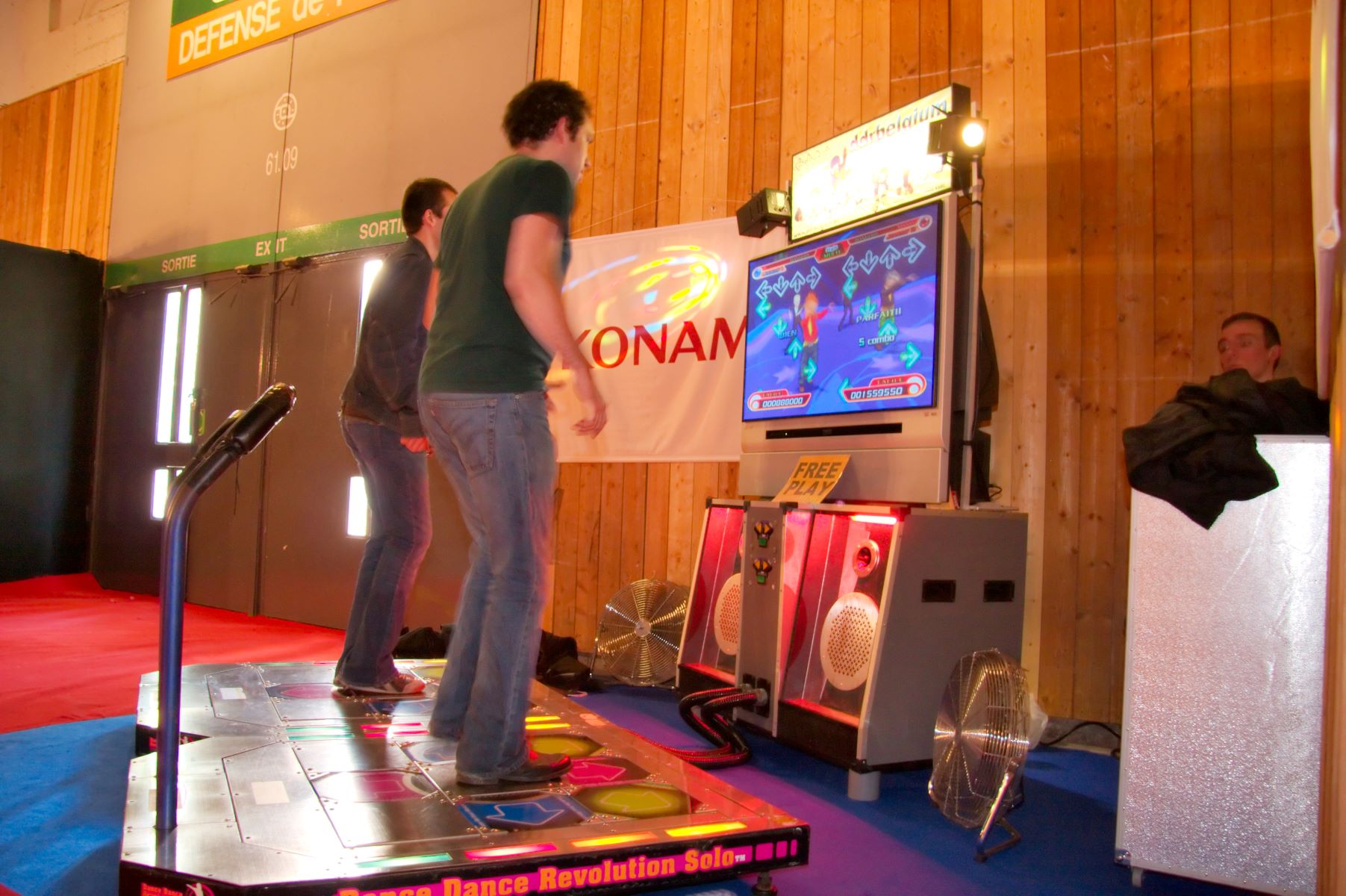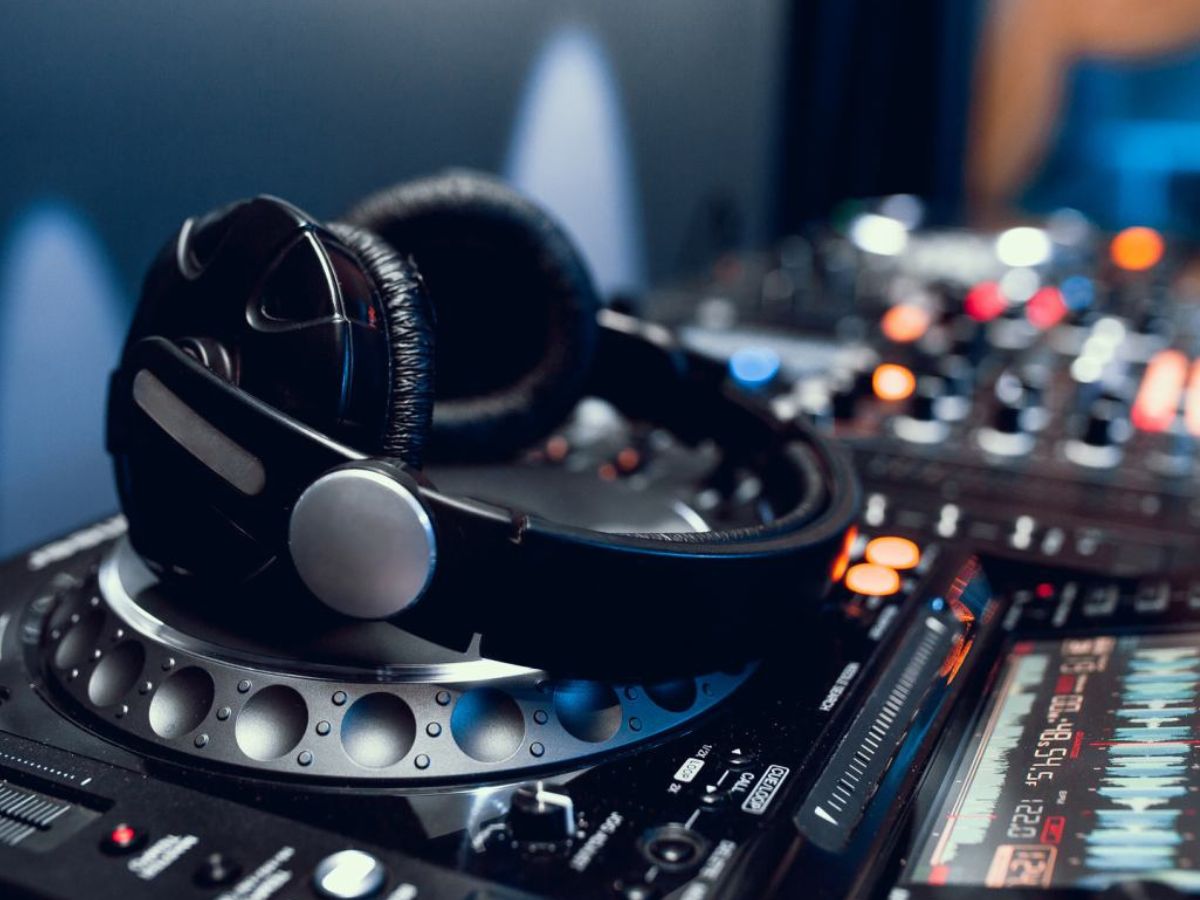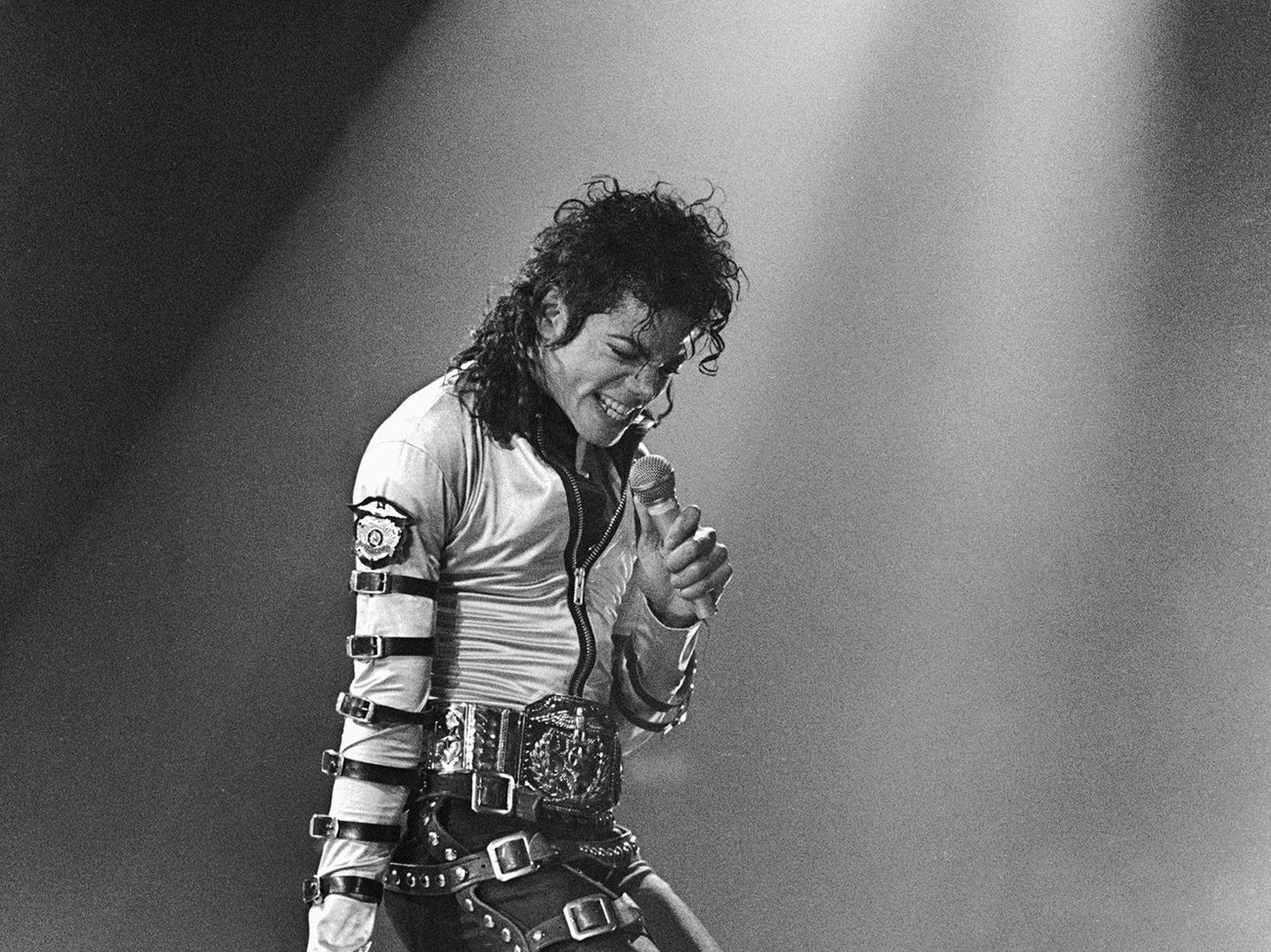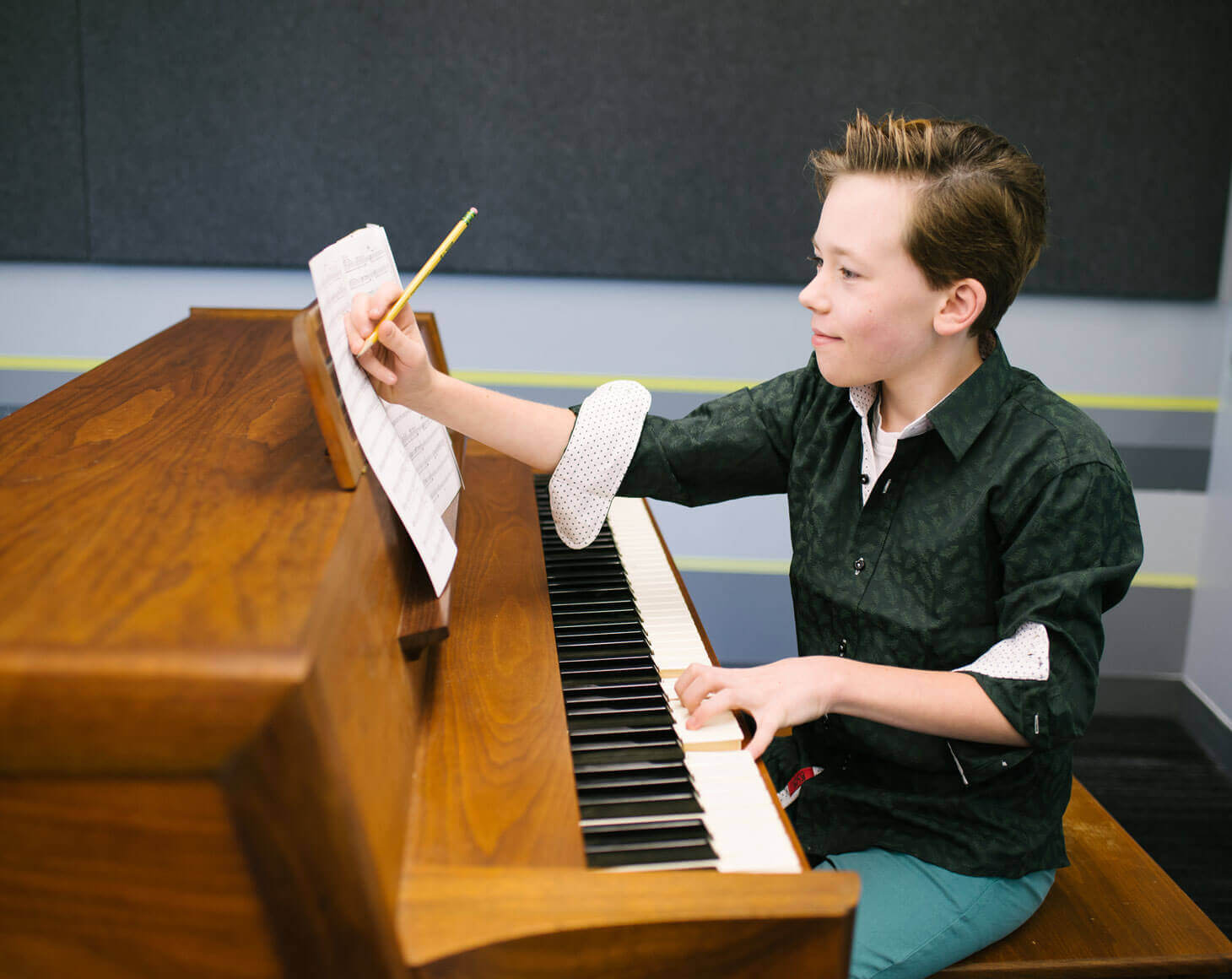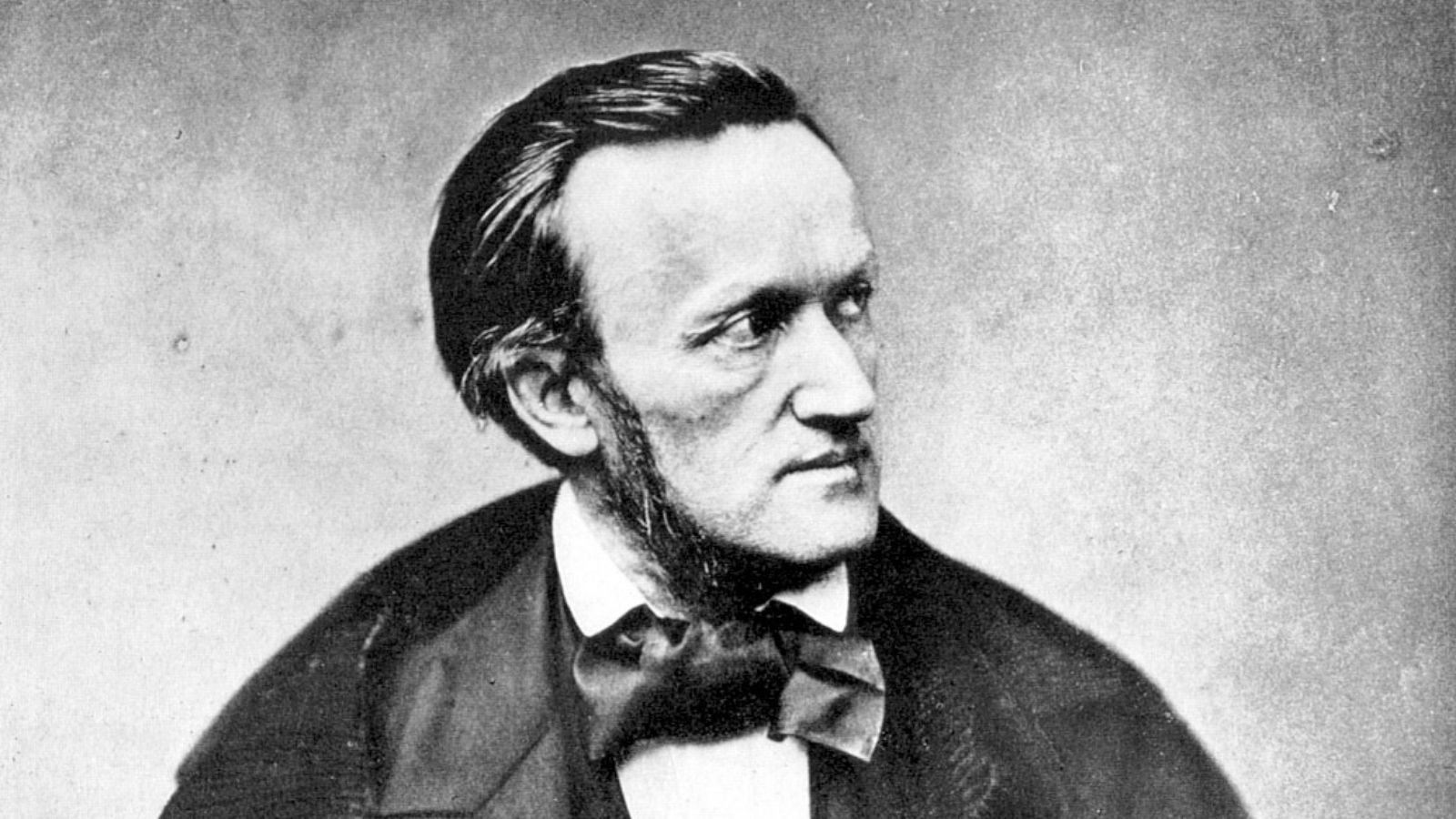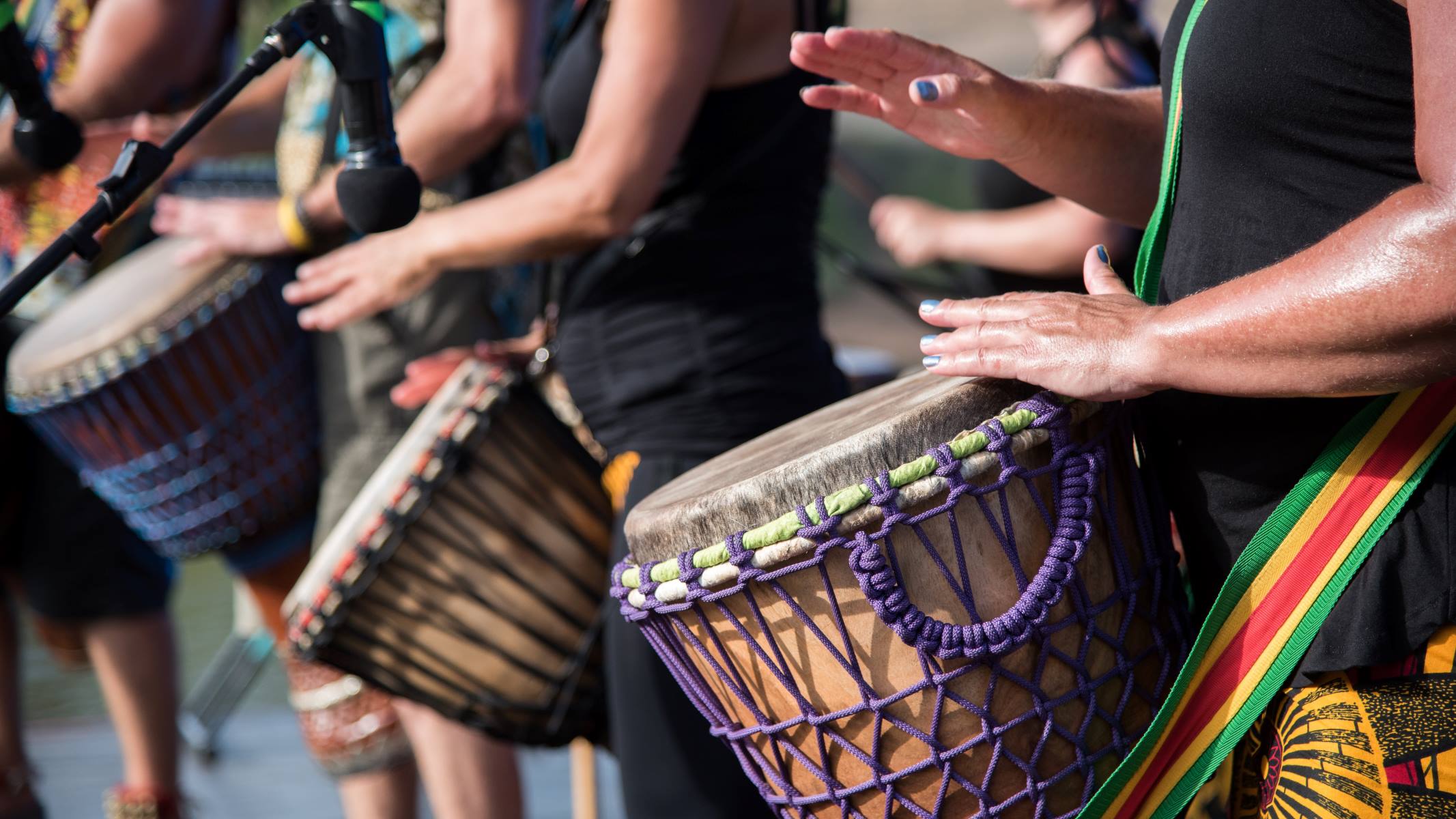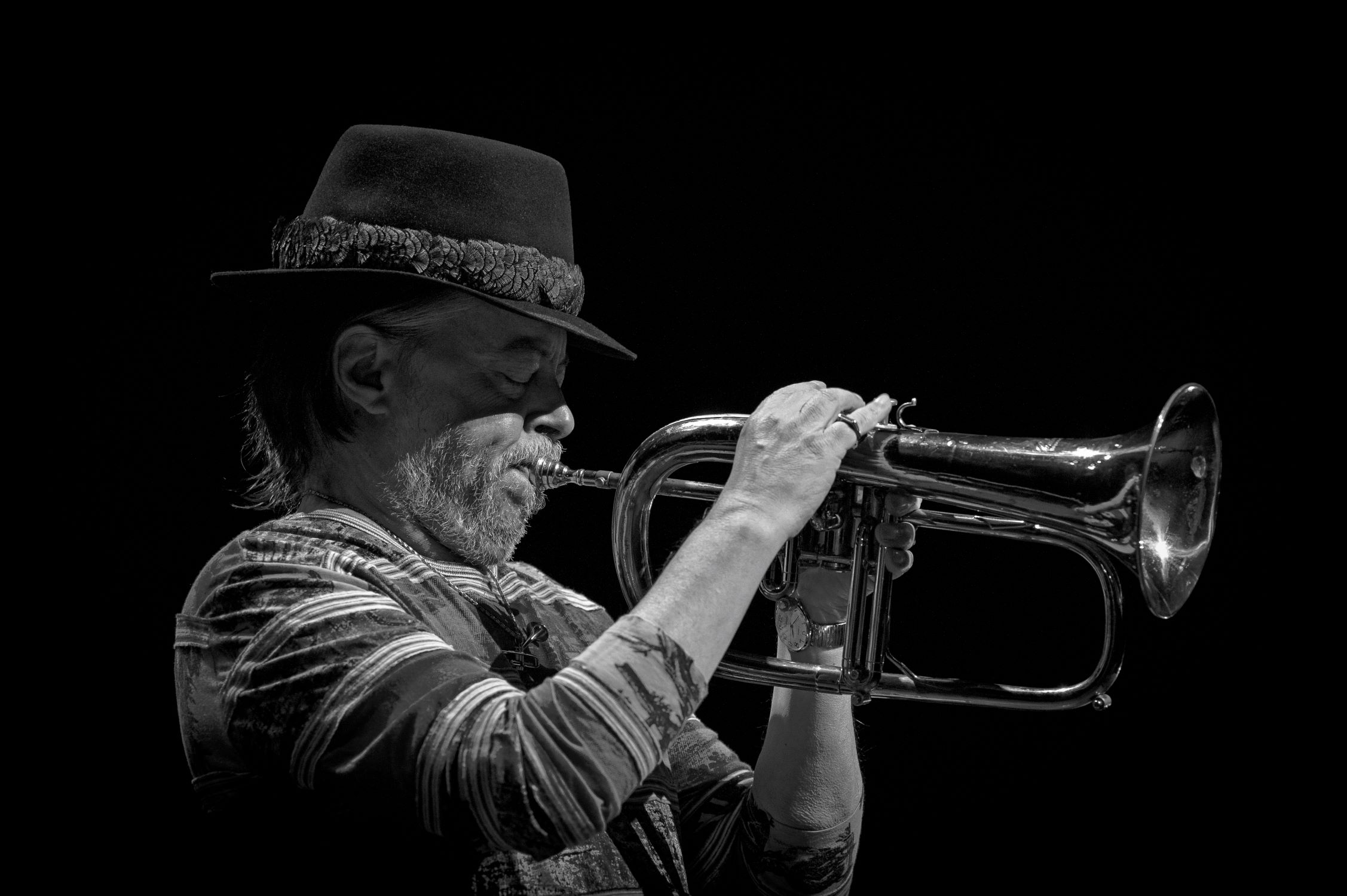Home>Genres>Jazz>Why Was Jazz Important In The Harlem Renaissance


Jazz
Why Was Jazz Important In The Harlem Renaissance
Modified: February 18, 2024
Explore the significance of jazz during the Harlem Renaissance and its role in shaping the cultural identity of the era. Discover the impact of this vibrant musical genre on the artistic and social movements of the time.
(Many of the links in this article redirect to a specific reviewed product. Your purchase of these products through affiliate links helps to generate commission for AudioLover.com, at no extra cost. Learn more)
Table of Contents
- Introduction
- The Origins of Jazz in America
- The Harlem Renaissance: A Cultural Explosion
- The Role of Jazz in the Harlem Renaissance
- Jazz as a Reflection of African-American Experience
- Jazz and Social Change in the Harlem Renaissance
- Jazz and the Influence on Art and Literature
- The Harlem Renaissance Legacy: Jazz as an Art Form
- Conclusion
Introduction
Jazz is a uniquely American art form that emerged in the early 20th century and quickly gained popularity, permeating various aspects of society. One of the most important periods in the history of jazz was the Harlem Renaissance, a cultural and artistic movement that took place in the 1920s and 1930s in Harlem, New York. The Harlem Renaissance was a time of remarkable creativity, intellectualism, and social change for African Americans.
The origins of jazz can be traced back to the African American communities in New Orleans in the late 19th century. It is a genre that is deeply rooted in African musical traditions, incorporating elements of spirituals, blues, ragtime, and European harmonies to create a unique and vibrant sound.
During the Harlem Renaissance, African American artists, writers, musicians, and intellectuals converged in Harlem, creating a thriving cultural scene that became the epicenter of black creativity. At the heart of this movement was jazz, which served as a powerful tool for self-expression, cultural identity, and social commentary.
Jazz became the soundtrack to the Harlem Renaissance, as musicians like Louis Armstrong, Duke Ellington, and Ella Fitzgerald mesmerized audiences with their innovative and virtuosic performances. The syncopated rhythms, improvisation, and expressive melodies of jazz captivated listeners and evoked a range of emotions.
In this article, we will explore the significance of jazz in the Harlem Renaissance and its profound impact on the cultural, social, and artistic landscape of the time. We will delve into how jazz reflected the African American experience, influenced social change, and became an influential force in other art forms such as visual art and literature. Finally, we will discuss the lasting legacy of the Harlem Renaissance and how jazz continues to be celebrated as a true American art form.
The Origins of Jazz in America
The roots of jazz can be traced back to the African American communities in New Orleans in the late 19th century. It developed as a distinct musical genre that incorporated a fusion of various musical traditions, including African rhythms, spirituals, blues, and European harmonies.
One of the key factors in the development of jazz was the interaction between African American and Creole musicians in New Orleans, who came from diverse cultural backgrounds. These musicians played a significant role in shaping the early jazz sound, blending their different musical influences to create a unique and dynamic style.
Another important element in the creation of jazz was the process of improvisation. Jazz musicians were known for their ability to spontaneously create melodies and rhythms on the spot. This improvisational approach gave jazz its distinctive character and allowed musicians to express their individuality and creativity.
One of the earliest forms of jazz was ragtime, which emerged in the late 19th century. Ragtime featured syncopated rhythms and lively melodies, and it laid the foundation for the development of jazz. Pioneering musicians like Scott Joplin popularized ragtime, which became a precursor to the jazz movement.
As jazz evolved, it began to incorporate elements of blues, a genre deeply rooted in African American culture. Blues added a soulful and emotive quality to jazz, with musicians using expressive vocal styling and bending notes to convey a range of emotions.
By the early 20th century, jazz started gaining popularity beyond New Orleans. Musicians began to travel and spread the unique sound of jazz to different parts of the United States. Cities like Chicago, New York, and Kansas City became hotbeds for jazz innovation and creativity, as musicians from diverse backgrounds came together to push the boundaries of the genre.
The development of recording technology in the 1920s played a pivotal role in popularizing jazz. Recordings allowed jazz to reach a wider audience, and the music industry recognized the commercial potential of this new and exciting genre.
Overall, the origins of jazz can be credited to the cultural exchange, improvisation, and blending of musical influences in African American communities. It was through the creativity and ingenuity of early jazz musicians that this truly American art form was born, setting the stage for its later prominence in the Harlem Renaissance.
The Harlem Renaissance: A Cultural Explosion
The Harlem Renaissance, also known as the “New Negro Movement,” was a cultural and intellectual renaissance that took place in Harlem, New York, in the 1920s and 1930s. It was a pivotal moment in African American history, characterized by a flourishing of art, literature, music, and intellectualism.
Harlem became a magnet for African American artists, writers, musicians, and scholars who sought to break free from the stifling constraints of racism and discrimination. They flocked to the neighborhood, creating a vibrant and dynamic cultural scene that became the epicenter of the Harlem Renaissance.
The movement was fueled by a sense of racial pride and a desire to challenge societal norms and stereotypes. African Americans sought to redefine their identity and portray their rich cultural heritage through various artistic mediums.
Key figures like Langston Hughes, Zora Neale Hurston, and Claude McKay emerged during this period, using their writings to explore themes of black identity, racial inequality, and the pursuit of social justice.
Music played a crucial role in the Harlem Renaissance, with jazz at its forefront. Jazz became the soundtrack to this cultural explosion, with its syncopated rhythms, improvisation, and emotional intensity capturing the spirit of the era.
Harlem’s music venues, such as the Cotton Club and the Apollo Theater, showcased the talents of legendary jazz musicians. Performers like Louis Armstrong, Duke Ellington, and Ella Fitzgerald mesmerized audiences with their virtuosity, pushing the boundaries of the genre and paving the way for future jazz innovations.
The Harlem Renaissance was not limited to music and literature; it encompassed visual arts, dance, theater, and intellectual discourse. Artists like Aaron Douglas and Jacob Lawrence depicted the African American experience through powerful and evocative visual art, while dancers like Josephine Baker infused elements of African and African American culture into their performances.
The movement was also marked by the establishment of important literary and intellectual organizations. The National Urban League, the National Association for the Advancement of Colored People (NAACP), and the Harlem Writers Guild provided platforms for African Americans to voice their ideas, challenge systemic racism, and advocate for social change.
Overall, the Harlem Renaissance was a period of immense cultural and intellectual growth for African Americans. It paved the way for greater recognition and appreciation of African American art, music, and literature. The movement not only transformed Harlem but also had a lasting impact on American culture as a whole, breaking down barriers and challenging the prevailing racial stereotypes of the time.
The Role of Jazz in the Harlem Renaissance
Jazz played a central and transformative role in the Harlem Renaissance, serving as both a cultural expression and a vehicle for social change. The genre was deeply intertwined with the spirit of the movement, reflecting the experiences, struggles, and aspirations of African Americans during this transformative period.
One of the key contributions of jazz to the Harlem Renaissance was its ability to provide a platform for African American musicians to showcase their talent and creativity. Jazz became a powerful symbol of black cultural expression and artistic autonomy. It allowed African American musicians to assert their identity and challenge the prevailing racist notions that attempted to diminish their artistic contributions.
Jazz also provided a means for African American musicians to break free from traditional musical conventions and explore new avenues of artistic expression. Improvisation, a hallmark of jazz, allowed musicians to experiment, innovate, and push the boundaries of the genre. This creative freedom allowed jazz artists to infuse their music with a distinct African American voice, capturing the essence of their lived experiences.
Furthermore, jazz served as a unifying force within the African American community during the Harlem Renaissance. It brought people together, fostering a sense of collective identity and pride. Jazz clubs and dance halls became social gathering places where people from all walks of life could come together, transcending socio-economic barriers and reinforcing a sense of community.
Through their performances, jazz musicians conveyed messages of resilience, hope, and the pursuit of equality. Their music resonated with the experiences and struggles of African Americans, addressing themes of oppression, discrimination, and the longing for freedom. Jazz became a vehicle for emotional expression, capturing the complexities of life and inviting listeners to reflect on the social inequities of the time.
Moreover, jazz broke down racial barriers and challenged stereotypes. It garnered a wide audience, attracting both black and white listeners. The appeal of jazz transcended racial lines, bringing people together and fostering a greater understanding and appreciation of African American culture and talent.
In summary, jazz played a pivotal role in the Harlem Renaissance by empowering African American musicians, providing a medium for artistic exploration and expression, fostering a sense of community, and challenging social norms. Its influence went beyond the realm of music, permeating various aspects of the movement and contributing to the broader cultural and social transformation of the time.
Jazz as a Reflection of African-American Experience
Jazz, as an art form, has always been deeply rooted in the African-American experience. It serves as a powerful reflection of the history, struggles, triumphs, and aspirations of African Americans throughout the centuries. Jazz captures the essence of the African-American narrative, conveying emotions, cultural identity, and social commentary through its vibrant rhythms, improvisation, and soulful melodies.
From its early beginnings in New Orleans to its prominence during the Harlem Renaissance and beyond, jazz has been a vehicle for storytelling and personal expression. It draws inspiration from African musical traditions, blending them with the realities of the African-American experience to create a distinctive sound that resonates with listeners.
One of the ways jazz reflects the African-American experience is through its connection to the blues. The blues, a genre born out of the hardships and struggles of African Americans, serves as the emotional foundation of jazz. The melancholy, longing, and resilience inherent in the blues find expression in the soulful and emotive nature of jazz music.
Jazz also reflects the complex history of African Americans in the United States. It emerged during a time of racial segregation, discrimination, and the fight for civil rights. Jazz musicians, through their performances and lyrics, captured the realities of racial inequality and systemic oppression. Their music became a form of resistance, empowering listeners and shedding light on the social and political issues faced by African Americans.
Furthermore, jazz has always been a reflection of the cultural diversity and vibrancy of African-American communities. It incorporates elements of African rhythms, gospel music, spirituals, and other musical traditions that have shaped the African-American musical landscape. Jazz celebrates the richness and diversity of African-American culture, providing a medium for preserving and expressing cultural heritage.
Throughout its evolution, jazz has also embraced the themes of migration and cultural displacement. As African Americans moved from the South to the urban centers of the North, jazz traveled with them. The music transformed, adapting to new environments and absorbing influences from different cultures. This process of musical cross-pollination reflected the experiences of African Americans navigating new territories and striving to define their place in society.
In summary, jazz acts as a profound reflection of the African-American experience, capturing the struggles, triumphs, cultural heritage, and social commentary of African Americans throughout history. Through its unique blend of musical elements and improvisation, jazz communicates the complexities of the African-American narrative, serving as a powerful artistic medium for expression, storytelling, and cultural celebration.
Jazz and Social Change in the Harlem Renaissance
The Harlem Renaissance was a period of immense social change for African Americans, and jazz played a pivotal role in driving and reflecting that change. Jazz music became a powerful tool for challenging racial stereotypes, promoting social equality, and advocating for civil rights during this transformative era.
One of the significant ways in which jazz contributed to social change was through its ability to bridge racial divides. Jazz clubs and venues in Harlem attracted audiences from diverse backgrounds, bringing together people of different races and fostering a sense of unity. The shared experience of enjoying the music helped to break down racial barriers and challenge stereotypes, promoting a greater understanding and appreciation of African American culture.
Jazz was also instrumental in amplifying the voices of African American artists and intellectuals who sought to challenge systemic racism through their work. Musicians like Louis Armstrong, Duke Ellington, and Billie Holiday used their platform to address social issues and advocate for equality. Through their lyrics and performances, they shed light on the experiences of African Americans, pushing for societal change and inspiring others to do the same.
Furthermore, the improvisational nature of jazz mirrored the spirit of rebellion and resistance that defined the civil rights movement. Jazz musicians embraced the freedom to create and express themselves, challenging the oppressive norms of society. This sense of creative freedom resonated with African Americans who were fighting for their rights and seeking to redefine their place in society.
Jazz music also served as a form of cultural empowerment during the Harlem Renaissance. By highlighting the talents and achievements of African American musicians, jazz showcased the immense artistic contributions of the black community. This celebration of African American culture became a source of pride and identity, helping to counter pervasive stereotypes and negative portrayals of African Americans in popular media.
Additionally, the popularity of jazz as an art form during the Harlem Renaissance provided economic opportunities for African American musicians. The success of jazz music and the establishment of Harlem as a cultural hub created employment and financial stability for many African Americans in the music industry. This economic empowerment played a crucial role in challenging the socio-economic disparities that affected African Americans at the time.
In summary, jazz music in the Harlem Renaissance became a catalyst for social change, challenging racial barriers, amplifying African American voices, promoting cultural empowerment, and paving the way for the civil rights movement. Jazz served as a tool for resistance, enlightenment, and unity, shaping the narrative of the Harlem Renaissance and inspiring future generations of artists and activists.
Jazz and the Influence on Art and Literature
Jazz, with its dynamic rhythms, improvisation, and emotional depth, had a profound influence on the art and literature of the Harlem Renaissance. The genre’s innovative and vibrant spirit inspired artists and writers to embrace new forms of artistic expression, resulting in a fusion of jazz and other artistic mediums.
One of the ways in which jazz influenced art during the Harlem Renaissance was through visual representations. Artists like Aaron Douglas and Romare Bearden incorporated elements of jazz into their artwork, using bold colors, fluid lines, and rhythmic patterns to capture the energy and vibrancy of the music. Their artwork became a visual interpretation of jazz, reflecting its syncopated rhythms and improvisational nature.
The influence of jazz on literature during the Harlem Renaissance was equally significant. Writers like Langston Hughes, Zora Neale Hurston, and Claude McKay drew inspiration from jazz to create a new literary style characterized by spontaneity, rhythm, and the cadence of the music itself. They embraced the improvisational nature of jazz in their writing, experimenting with language, and incorporating the syncopated rhythms of the music into their prose and poetry.
Jazz music provided a backdrop and a source of inspiration for many literary works during this period. Writers incorporated jazz motifs into their storytelling, evoking the mood and atmosphere of the music to enhance their narratives. The syncopation and improvisation found in jazz mirrored the unconventional storytelling techniques employed by writers, resulting in a unique fusion of art forms.
Moreover, jazz music served as a muse for poets of the Harlem Renaissance. Langston Hughes, known as the “Poet Laureate of Harlem,” captured the spirit and essence of jazz in his poetry. His rhythmic and lyrical style mirrored the improvisational nature of jazz, allowing the reader to experience the music through the written word.
Jazz also influenced the structure and form of literary works. Writers experimented with fragmented narratives, unconventional plot structures, and stream-of-consciousness techniques, akin to the free-flowing nature of jazz improvisation. These innovative literary approaches enabled writers to capture the spontaneity and complexity of the African-American experience during the Harlem Renaissance.
Overall, jazz had a profound influence on the art and literature of the Harlem Renaissance, stimulating a fusion of artistic forms and inspiring new modes of expression. The dynamic and expressive qualities of jazz music served as a catalyst for artistic experimentation, creating a cultural renaissance that celebrated the vibrancy, rhythm, and creativity of African-American culture.
The Harlem Renaissance Legacy: Jazz as an Art Form
The legacy of the Harlem Renaissance and its impact on jazz cannot be overstated. The movement transformed jazz into a recognized and respected art form, elevating its status from popular entertainment to a sophisticated and influential genre that continues to captivate audiences worldwide.
One of the significant contributions of the Harlem Renaissance to jazz was the elevation of African American musicians as cultural icons and artistic innovators. The achievements of musicians such as Louis Armstrong, Duke Ellington, and Ella Fitzgerald during this period solidified their place in the pantheon of jazz legends. Their talents and pioneering spirit paved the way for future generations of jazz musicians, establishing a rich and enduring tradition.
The Harlem Renaissance also marked a milestone in the global recognition and acceptance of jazz music. The movement brought the sounds of jazz to a broader audience, not just in the United States but also internationally. Jazz became a symbol of American culture and a source of pride, representing the creativity and cultural diversity of the African American community.
The impact of the Harlem Renaissance on jazz can still be felt today in terms of artistic experimentation and the fusion of musical genres. The movement encouraged musicians to push the boundaries of jazz, incorporating influences from classical music, folk music, and other cultural traditions. This spirit of innovation and collaboration shaped the evolution of jazz, giving rise to various subgenres and styles.
Furthermore, the Harlem Renaissance emphasized the importance of jazz as a powerful form of self-expression and cultural commentary. Jazz musicians embraced their roles as storytellers, conveying the experiences, struggles, and aspirations of African Americans through their music. This tradition of using jazz as a vehicle for social commentary and as a reflection of the human condition has continued throughout the history of the genre.
The legacy of the Harlem Renaissance extends beyond the music itself. It impacted other art forms such as literature, visual arts, and dance, fostering a rich and interconnected artistic community. The collaboration and cross-pollination of ideas between different artistic disciplines brought about a transformative cultural movement that left an indelible mark on American history.
Today, jazz continues to inspire and captivate audiences worldwide, while honoring its roots in the Harlem Renaissance. It serves as a testament to the enduring power of African American creativity and resilience. Jazz festivals, performances, and educational programs pay homage to the cultural legacy of the Harlem Renaissance, ensuring that its impact on jazz and American culture is remembered and celebrated for generations to come.
Conclusion
The Harlem Renaissance was a transformative period in American history, and jazz played a central role in its cultural and social upheaval. Jazz, with its dynamic rhythms, improvisation, and emotional depth, became a symbol of African American creativity, resilience, and identity.
Through jazz, African American musicians found a platform to express their experiences, challenge social norms, and advocate for civil rights. The genre became a powerful tool for social change, breaking down racial barriers, and fostering a sense of unity within the African American community.
Inspired by the sounds of jazz, artists and writers of the Harlem Renaissance pushed the boundaries of their respective mediums, creating vibrant and innovative works that reflected the spirit and energy of the music. The legacy of the movement lives on, as jazz continues to inspire and influence artists and musicians across the globe.
The Harlem Renaissance’s impact on jazz is far-reaching. It established jazz as a recognized and respected art form, paving the way for future generations of musicians and artists to explore new possibilities and redefine musical boundaries. The movement also brought jazz to the forefront of the American cultural landscape, garnering international recognition and appreciation.
Today, jazz remains a powerful form of expression, with its roots firmly planted in the rich history of the Harlem Renaissance. It serves as a testament to the creativity, resilience, and cultural heritage of African Americans, while also allowing for artistic experimentation, collaboration, and social commentary.
As we look back on the legacy of the Harlem Renaissance and its profound influence on jazz, we are reminded of the transformative power of art and music. The movement’s impact continues to resonate, inspiring us to embrace diversity, celebrate cultural expression, and strive for social justice.
In celebrating the contributions of the Harlem Renaissance to jazz, we not only honor the musicians and artists who paved the way but also carry forward their legacy of cultural preservation, artistic innovation, and the pursuit of equality. Jazz remains a vibrant and enduring art form that reminds us of the indomitable spirit of the human experience.

